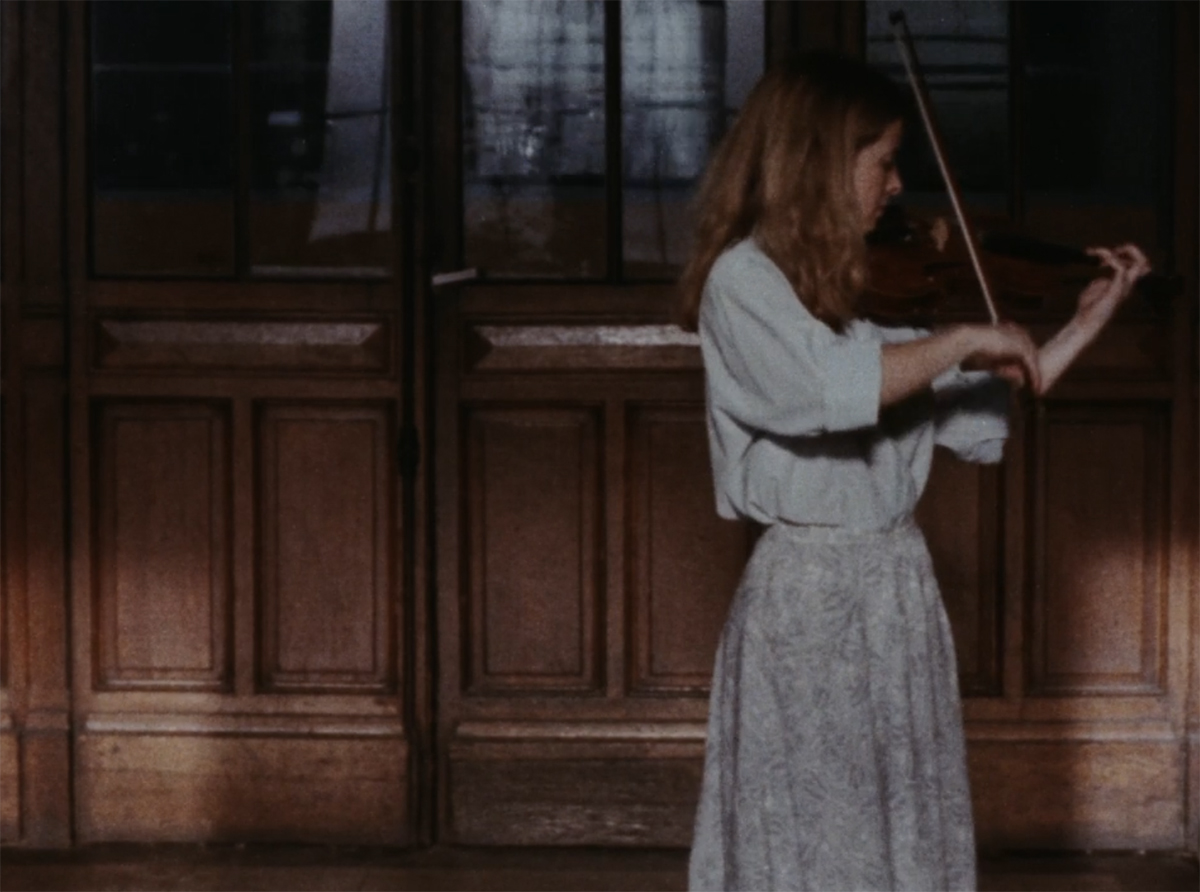Die Reise nach Lyon
German and French spoken, English subtitles
After the screening of 14.06 there will be a conversation in French between Claudia von Alemann and Xavier García Bardón (ULB/ERG).
Courtisane is een platform voor film en audiovisuele kunsten. In de vorm van een jaarlijks festival, filmvertoningen, gesprekken en publicaties onderzoeken we de relaties tussen beeld en wereld, esthetiek en politiek, experiment en engagement.
Courtisane is a platform for film and audiovisual arts. Through a yearly festival, film screenings, talks and publications, we research the relations between image and world, aesthetics and politics, experiment and engagement.
German and French spoken, English subtitles
After the screening of 14.06 there will be a conversation in French between Claudia von Alemann and Xavier García Bardón (ULB/ERG).

Elisabeth wanders the sleepy streets of Lyon, following in the footsteps of socialist and feminist writer Flora Tristan. Carrying with her the writer’s diary and a tape recorder, she tries to reconstruct what Tristan might have felt when she walked the same streets, shortly before her death, at 41, in 1844. Filmed before Lyon’s Italianate facelift and its listing as a World Heritage Site, this remarkable exploration of feminist history portrays a working-class city where traces of the past persist, the leprous facades revealing wrinkles that hark back to the Canut revolts of the 19th century and the roundups during the Second World War. But it is not so much the image that marks this film as it is the sound. It is surprisingly present and all the more vivid because it plays on scarcity, somewhat like the image yet in an even more radical way. Everything happens as if the city were an echo chamber, as if each scene were a sounding board for everyday sounds floating between strangeness and familiarity, past and present. The violin, which Elisabeth plays in the final scene as a resolution to her search, makes her grasp the meaning of resonance, which is first of all that of her footsteps in the city. “I could hear the sound of my own footsteps. I moved and my steps echoed through the street. The echo of Flora’s footsteps, a century and a half later: the echo of her passage.” By listening attentively, Elisabeth is able to recognize, in the humblest of sounds, the strongest of resonances: the imprint of the past underneath the echoes resounding in the present.
“In Die Reise nach Lyon, a woman historian, fascinated by the diary kept by Flora Tristan during the last few months of her life, refuses the traditional way of ‘looking’ at history and gets caught up in a complex, multi-layered pattern of reverberations. History and ‘her’ story become a network of resonances. One life/ voice imprints in another. The process of social change, instead of being read by academic detectives in stuffy archives, resound in a space between a sound and its similar echoes. A visually fascinating film which is nevertheless one of the few real sound films ever made.” (Paul Willemen)
2K digital restoration by Deutsche Kinemathek